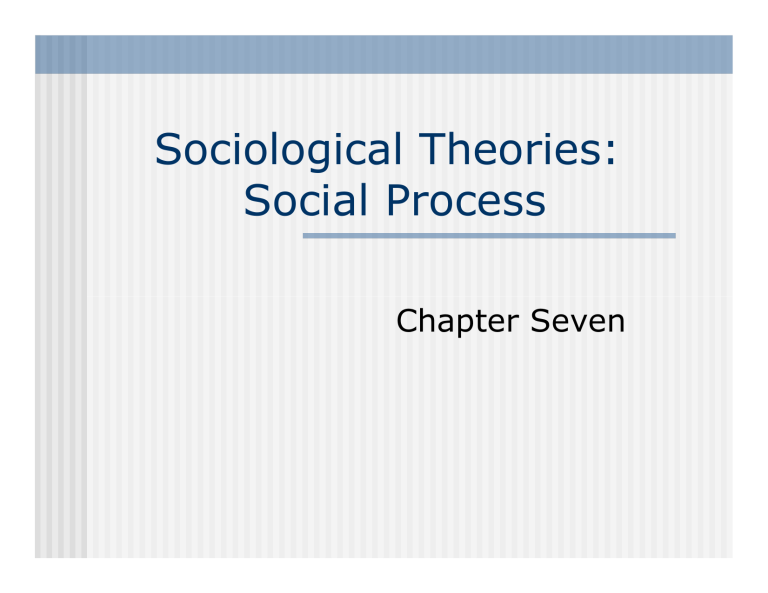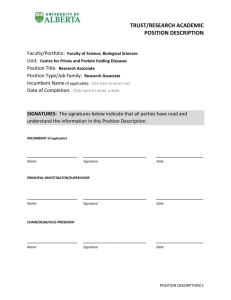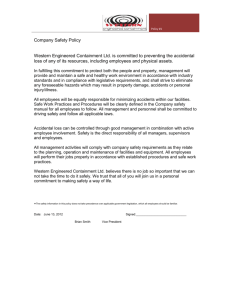Sociological Theories: Social Process

Sociological Theories:
Social Process
Chapter Seven
Learning Theories
Differential Association-
Edwin H. Sutherland-Principles of
Criminology, 1939
Components of Theory- (Handout)
Differential Identification
Daniel Glaser –
(Form of Anticipatory Socialization)
…the notion of reference groups, whose values, attitudes, and behavior you admire and wish to copy.
Differential Identification
In relationship to Differential
Association –
…Differential Identification Theory stressed that learning criminal behavior can occur without actually interacting with the group influencing you.
Social Learning Theory
Albert Bandura –
…humans are not naturally aggressive, instead, aggressive tendencies are learned later in life.
Learning occurs because of the association of a stimulus with a response (classical conditioning)
Social Learning Theory
Or…
Learning occurs because of the rewarding of a particular behavior
(operant conditioning).
Differential Reinforcement
Robert Burgess & Ronald Akers –
…criminal behavior and attitudes are more likely to be learned when they are reinforced/rewarded by friends and/or family.
Control Theories
Containment Theory – (Reckless)
A non-causal explanation of crime
There exists in society an external
(outer) social structure which holds individuals in line and internal
(inner) buffers which protect people against deviation.
Containment Theory
Outer (external) Containment-
Provided by – society, state, tribe, village, family , other nuclear groups.
Components of Outer Containment:
A role structure which provides scope for the individual.
Containment Theory
A set of reasonable limits and responsibilities.
An opportunity for the individual to achieve a status.
Cohesion among members, joint activity and togetherness.
Sense of belongingness.
(Identification)
Containment Theory
Identification with one or more persons within the group.
Provision for supplying alternative ways and means of satisfaction.
Containment Theory
Internal (Inner) Containment:
The ability of a person to direct himself/herself to follow the norms of society.
A favorable image of self in relation to other persons, groups, and institutions.
Containment Theory
An awareness of being an inner directed, goal oriented person.
A high level of frustration tolerance.
(Withstand adversity, pressure,etc.)
Strongly internalized morals and ethics.
Well developed ego and super ego.
(Control and management)
Containment Theory
The Inner and Outer Containments, these components are not causes.
They are buffers against the cause of crime.
Social Control Theory
Social Control Theory-
Travis Hirschi- 1969
…our bounds to conventional social institutions keep us from committing deviant behavior.
Social Institutions-
Family, schools, religion, (Others)
Social Control Theory
Hirschi’s four Elements of Ties:
(The individual has to society)
Attachment – The degree to which we care about the opinions of others.
Commitment – Refers to the amount of importance an individual place on conventional pursuit.
Social Control Theory
Elements of Ties: Cont’d
Involvement – The amount of time an individual spends on some conventional pursuit.
Belief – Refers to acceptance of the norms of conventional society. (The
internalization of societal norms.)







